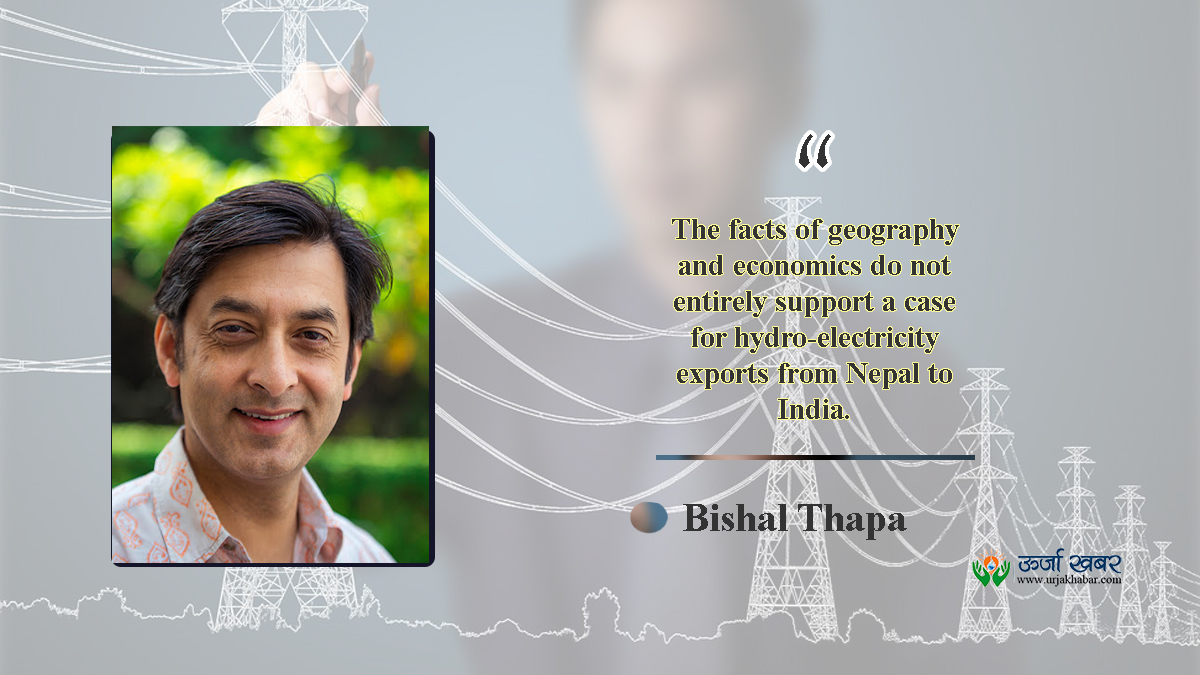
A week ago, news broke that Nepal Electricity Authority (NEA), our monopoly state-owned electric utility, had lost its bid to sell electricity in India under a competitive tender.
For decades Nepali planners and development partners have been pushing the idea that Nepal’s fortunes lay in exploiting its abundant hydro power and exporting electricity to India. It was the stuff that dreams are made of, and on which our government had staked its plans to build some 10,000 MW of hydro power plants within the next decade.

The promise of hydro-power exports was so tantalizing that it even made the US Ambassador to Nepal, His Excellency Randy William Berry, famously remark in an op-ed in October 2019, “that is why the MCC [Millennium Challenge Corporation] project focuses on constructing lines that will bring Nepal’s power to the consumers who will pay Nepal good money for it. It is a simple fact of geography and economics that means India.”
The facts of geography and economics do not entirely support a case for hydro-electricity exports from Nepal to India. Nepal’s power is simply too expensive for India’s power market. NEA’s failed bid could be the first indicator of that harsh reality.

The authority’s price offer was approximately 30 percent higher than the winning bid, and that too, while already offering its power at a discount. India’s power prices are expected to decline in the future with increased renewable energy, efficiency introduced by power trading, continued excess capacity in its system and next generation reforms (such as retail deregulation). Nepal’s cost of power, on the other hand, will only increase.
Unless Nepal’s electricity carries with it a whiff of fresh Himalayan air, it is unclear why Bangladesh will travel all the way to Nepal for electricity purchases when cheaper, just as clean electricity is available across the border in India.
The case for Nepali hydro-power exports has always been built on imaginary assumptions. News that NEA had failed in its bid should have at least forced a reconsideration of that view. Instead, nothing of the sort happened.
Nepali energy planners offered no course correction. Stock prices of hydro power in Nepal remained steady. Developers of new hydro power plants continued to remain positive. In fact, the story barely made the news.
Those who believed in the promise of Nepali hydro power exports simply ignored the news. Those who did not believe, simply carried on saying “I told you so.”
Maybe it is important not to overreact to the loss. After all, it was the authority’s first ever bid for electricity export to India. The bid was for a small volume. With time, experience, and larger volumes, perhaps the NEA will be able to break into the Indian electricity market.
But we must assess this loss, no matter how insignificant it may be.
First, Nepal’s electricity strategy needs a stronger scientific and analytical basis. It would be wrong to bet the energy future of an entire nation on perceptions of geography and economics. But it would be tragic to get that bet wrong. Our strategic course must be more calculated, weighing the objectives, risks, and outcomes more carefully.
Second, Nepal’s energy sector needs greater diversity of thought. Though small, its energy sector is complex, operating under resource constraints and geo-political challenges. We need all minds, and the full diversity of resources, to work in tandem. Nepali planners must actively solicit and integrate a diversity of thought in their planning process, while also seeking to harness the full range of new energy technologies.
Third, the fundamentals for Nepal’s power sector have now changed for good. We must begin to plan for an alternative future, where Indian imports are our primary supply source. If Nepalis can receive cheaper electricity from India, why produce it here? After all, we import just about everything now—why not electricity too?
Fourth, if Nepal intends to be meaningfully competitive in Indian power market, it can’t do so by hiding in a cave up in the mountains. It needs a bolder strategy for success, a deeper understanding of Indian power markets, and a willingness to engage. Nepal must establish a trading company in India and demonstrate that it has the courage to compete.
Fifth, competition begins at home. The authority can’t be afraid of competing at home, while believing it can compete abroad. That’s a bit like showing up for the football world cup never having played a match before.
